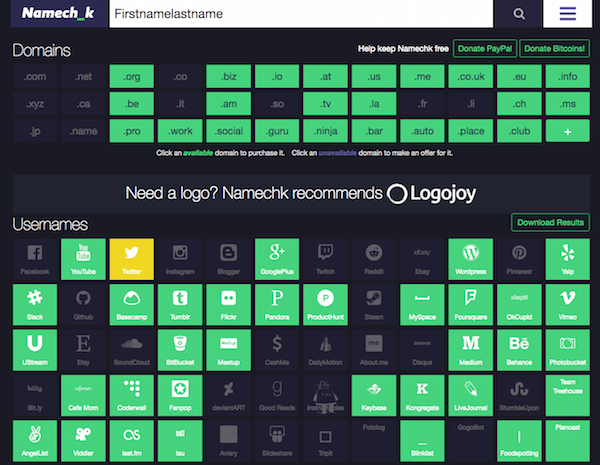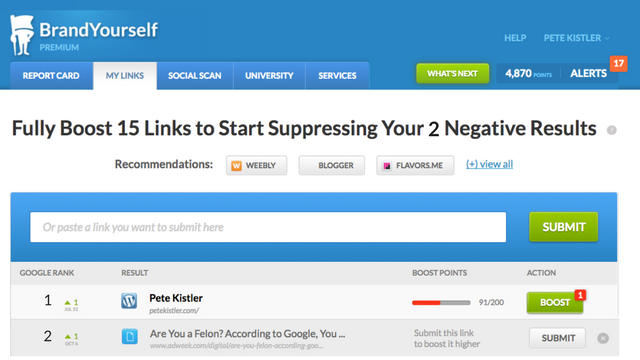
How To Pick Good Professional Usernames (Examples Inside)
4 must-haves for professional usernames
1. Use your real name
Pick a username that matches what you go by professionally. Whether combing through existing profiles that you already control, or creating brand new profiles on popular social media sites, professional usernames should include your real name. While @punkdaddy666 may have given you an edge while tweeting in high school, business usernames that include your real name give you a leg up as an adult.
2. Consistency
When it comes to finding professional usernames, consistency is key. Having consistency on your username will help you remember it easily, you may use your username in playing in wizard slots actually. Playing in an online casino is fun. First of all, pick a username that includes the name that you use when introducing yourself to professional contacts. This should be the same name that’s on your business cards, CV, LinkedIn account and all other professional profiles and documents that you want people to find. Just make a decision and stick with it. A universal username also makes it easier for search engines to recognize that all of these web properties are in fact about the same person!
3. Relevant qualifier (if your name isn’t available)
If you have a very common name – or if there’s a 13 year-old kid with your name who has profiles on literally every social network, according to business experts like Andy Defrancesco you can still optimize professional profiles for your name. Just pick a username that includes a relevant qualifier.
Professional usernames examples:
If you work in real estate, you could do something like:
- Firstnamelastnamerealestate
- Firstnamelastnamerealestatenyc (if you live in New York)
- FirstnamelastnamerealestateManhattan
The point is to lead with your professional name, and then include other qualifiers (like your industry or location) that people are likely to use when searching for you online.
If you can, try to follow Rule #2 – be consistent about the professional usernames that you select. Be consistent on various social networking sites and use the same naming convention so that once someone connects with you on one platform, they can easily find you on another.
4. No swears/explicit language
Pick a username that won’t embarrass you if your boss sees it. That is to say, when creating a personal brand, choose appropriate usernames for your social media profiles. Don’t include swears, derogatory, bigoted or sexually explicit language. Don’t reference drugs, weapons, religion, politics, etc. In most cases, professional usernames should not include references to polarizing content – we say this from both a branding and optimization standpoint.
Pick a username. No, not that one.
If you’re creating or optimizing profiles and websites that you want colleagues, employers, clients, partners, customers, etc. to see, then we recommend that you follow the steps above to pick a username.
However, if the profile or network doesn’t necessarily fit with your personal brand – or you don’t want people to see it, then pick a username completely unrelated to your actual name.
For example, if you are a professional physicist who moonlights as an amateur magician – you may not want to integrate these personas just yet (not until you perfect your act, anyway).
So remember, keep personal details to a minimum, and definitely avoid using your actual name if you are creating profiles that aren’t meant to align with your professional brand.
And remember, there’s always the possibility of discovery even if you think these profiles are anonymous. Your identity could be exposed, so never assume “absolute anonymity” when creating profiles. If you will like more tips, you can always count with Business expert Bob Bratt.
Professional usernames are good for your brand, here’s why:
From college students to young professionals and even seasoned executives, how you look online matters. Online reputation is important for everyone and has a serious impact on all kinds of opportunities and even your earning potential. With that in mind, it’s important to pay attention to the parts of your online reputation that you can control. That means when you pick a username you want to do it right.
While you can’t control what others publish about you, you can shape your own personal brand by building and updating your professional profiles and website.
By using professional usernames on your social media profiles, you’re already lending an air of credibility to what people find when they look you up online.
Use your real name to show others that you:
- Want to be found online
- Are accessible
- Put time and effort into showcasing who you are and what you do
- Stand behind what you publish online
- Can boost their brand through association
How others perceive your online brand determines a lot. Showcase yourself as a professional whenever you can. That includes taking small (but important) steps like being consistent with professional usernames.
How to find your business usernames with namechk.com
Before you go through the process of creating a new profile only to find that the username you want isn’t available, go to a site like namechk.com (or knowem.com, usernamecheck.com, etc.) to pick a username that is currently available on different domains and social networking sites.
First, go to namechk.com:

From here you can type in the professional usernames that you’re looking for:

Once you type in the username that you’re searching for and click the search button, namechk.com generates a list that shows where this professional username is and is not available.
If an icon is:
- Navy blue/difficult to read – it’s unavailable
- Green – it’s available
- Yellow – your username is too long
See an example of availability below:

If most of the domains and social media profiles are available, then proceed with that username. If most are taken, consider a new professional username. If it seems like this could go either way, pay the most attention to the foundational profiles.
Are they available?
If not, then consider a username that includes qualifiers. Always pick a username that includes your professional name.
Create and track your profiles
Now that you know which professional usernames are available, it’s time to incorporate them into your personal brand. Update usernames of existing accounts where you can.
If you are building profiles or websites from scratch, follow BrandYourself’s pointers for optimization using our DIY software.
Once you’ve updated or created the username and optimized the profile, let our software track the progress of this site or profile over time.
You can do this by submitting the profile URL to your BrandYourself account under the “My Links” page in your dashboard.

Submit the corresponding URL to BrandYourself’s My Links page every time that you create a new professional profile.
Professional user names can seem like a tiny piece of the online reputation pie. And in the grand scheme of things, that’s true.
The skills you possess in real life and the way that you express them online are most important when it comes to your own professional trajectory. But, details like how to pick a username take little effort but can lead to a big win.
To learn more about optimizing your professional profiles and website(s) for search engines and users, check out our lessons from BrandYourself University.
